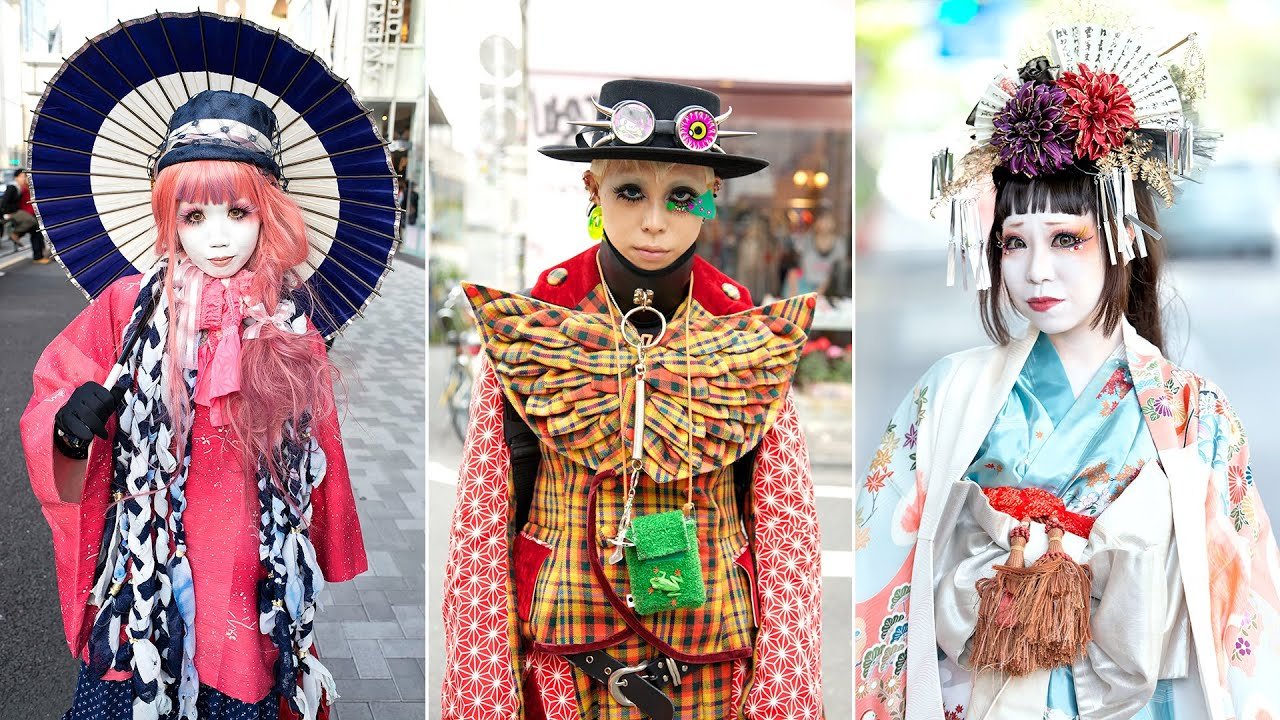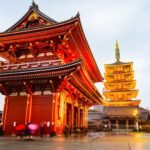Japan’s Unique Fashion Trends
Japan is renowned for its distinctive and influential fashion scene, which seamlessly blends traditional elements with cutting-edge modern styles. From the graceful lines of the kimono to the vibrant and eclectic looks of Harajuku street fashion, Japanese fashion trends offer a fascinating glimpse into the country’s cultural heritage and contemporary creativity. This post explores the evolution of Japan’s unique fashion trends, highlighting the key influences and styles that define its dynamic fashion landscape.
1. The Timeless Elegance of the Kimono
The kimono, Japan’s traditional garment, is a symbol of the country’s rich cultural history and aesthetic principles. Characterized by its long sleeves, wide belts (obi), and intricate patterns, the kimono embodies grace, formality, and attention to detail.
- Historical Significance: The kimono has been worn for centuries, evolving through various periods to reflect changes in society and fashion. Originally a daily wear garment, it became more formal over time, with specific styles designated for different occasions.
- Design and Craftsmanship: Kimono-making is an art form, involving meticulous craftsmanship. Fabrics such as silk are adorned with elaborate designs, often depicting nature, seasons, and traditional motifs. The way a kimono is tied and worn also holds cultural significance.
- Modern Adaptations: While traditional kimonos are still worn during special occasions like weddings, tea ceremonies, and festivals, modern designers have reimagined the kimono, incorporating contemporary fabrics and styles to make it more accessible for everyday wear.
2. Yukata: Casual Summer Attire

The yukata is a lighter, more casual version of the kimono, typically worn during the summer months and at festivals.
- Comfort and Style: Made from breathable cotton or synthetic fabrics, yukatas are ideal for warm weather. They are often brightly colored with bold patterns, making them perfect for festive occasions.
- Festival Wear: Yukatas are a staple at matsuri (festivals) and fireworks displays, where they add to the vibrant and lively atmosphere. Accessories like geta (traditional sandals) and kanzashi (hair ornaments) complete the look.
- Everyday Casual Wear: In recent years, the yukata has also gained popularity as casual summer wear, both in Japan and internationally, appreciated for its comfort and aesthetic appeal.
3. The Rise of Harajuku Street Style
Harajuku, a district in Tokyo, is internationally recognized as a hub for avant-garde and eclectic street fashion. It is a place where creativity and individuality flourish, giving rise to some of Japan’s most unique and influential fashion trends.
- Subcultures and Styles: Harajuku is home to various subcultures, each with its distinct style. From Lolita fashion, inspired by Victorian and Rococo aesthetics, to Gothic and Decora, the district celebrates diversity and self-expression.
- Influence on Global Fashion: Harajuku street style has significantly impacted global fashion, inspiring designers and fashion enthusiasts worldwide. The bold colors, playful patterns, and innovative layering techniques showcase a fearless approach to fashion.
- Fashion Events and Shops: Harajuku hosts numerous fashion events and is dotted with boutiques and vintage shops that cater to a wide range of tastes. Iconic stores like Comme des Garçons and Baby, The Stars Shine Bright contribute to the district’s dynamic fashion scene.
4. Modern Japanese Fashion: Blending Tradition with Innovation
Japanese fashion today is a harmonious blend of traditional influences and modern innovation, creating a unique and forward-thinking aesthetic.
- Minimalism and Clean Lines: Modern Japanese designers often embrace minimalism, emphasizing clean lines, neutral colors, and understated elegance. Brands like Uniqlo have popularized simple yet functional clothing that appeals to a global audience.
- Technological Integration: Japan’s fashion industry is at the forefront of integrating technology with apparel. From wearable tech to innovative fabrics, designers are pushing the boundaries of what clothing can be.
- Sustainable Fashion: There is a growing emphasis on sustainability within Japanese fashion, with designers focusing on eco-friendly materials and ethical production practices. This aligns with broader global trends towards environmental consciousness.
5. Pop Culture and Fashion: Anime, Manga, and Beyond
Japanese pop culture, including anime and manga, plays a significant role in shaping contemporary fashion trends.
- Anime-Inspired Fashion: Characters from popular anime series often influence streetwear and high fashion. Elements like bold colors, unique accessories, and imaginative designs reflect the fantastical worlds depicted in these media.
- Manga and Graphic Prints: Manga-inspired prints and graphic designs are prevalent in both casual and high-fashion clothing, appealing to fans and fashionistas alike.
- Collaborations and Influences: Collaborations between fashion brands and pop culture franchises create unique and limited-edition collections that celebrate the intersection of fashion and entertainment.
6. Gender-Neutral and Inclusive Fashion
Japan is also embracing gender-neutral and inclusive fashion, breaking away from traditional gender norms and promoting diversity.
- Unisex Clothing Lines: Many Japanese brands are launching unisex clothing lines that cater to all genders, offering versatile and inclusive styles.
- Breaking Stereotypes: The fashion scene in Japan encourages individuals to express themselves freely, challenging conventional gender roles and promoting a more inclusive society.
- Representation in Media: Increased representation of diverse body types, genders, and identities in fashion media and advertising reflects the growing acceptance and celebration of individuality.
7. The Future of Japanese Fashion
As Japan continues to influence global fashion, the future holds exciting possibilities for the evolution of its unique style.
- Sustainable and Ethical Practices: The ongoing shift towards sustainability will likely drive innovation in eco-friendly materials and ethical manufacturing processes.
- Technological Advancements: Advances in technology will continue to shape the fashion industry, with smart textiles and digital fashion becoming more prevalent.
- Cultural Preservation and Innovation: Balancing the preservation of traditional elements with modern innovation will ensure that Japanese fashion remains both rooted and progressive, maintaining its distinctive identity on the world stage.
Conclusion
Japan’s fashion scene is a captivating blend of tradition and modernity, where the elegance of kimonos coexists with the bold creativity of Harajuku street style. This unique fusion not only reflects Japan’s rich cultural heritage but also showcases its ability to innovate and influence global fashion trends. Whether you’re inspired by the timeless beauty of traditional garments or the vibrant energy of contemporary streetwear, Japan offers an endless array of styles that celebrate individuality, creativity, and the ever-evolving nature of fashion.



